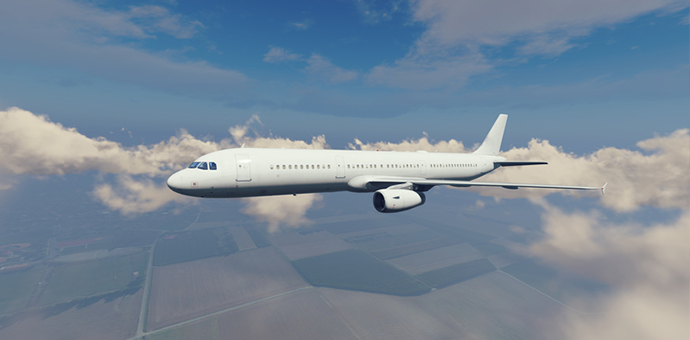Introduction
By 2025, more than half of all the commercial aircraft in airline service globally will be controlled by the multiple aircraft leasing companies.
The lessor’s primary business is preserving the value of their asset, means ensuring that the aircraft will retain the maximum possible value whilst generating lease income and maintaining adequate reserves.
Commercial aircraft leases are onerous and provide a number of complications related to legal, technical, and logistical issues. Commercial lessors often require that the aircraft and its technical records be in a condition that exceeds the regulator’s airworthiness requirements.
An aircraft with poor technical records (even they may be compliant with regulatory obligations) will have an adverse effect on current value and may also affect the residual value.
Operators often fail to fully consider the technical requirements that are imposed on them when they lease aircraft. The challenge being that the Operators will throughout the lease, remove, repair, and replace parts. (Particularly related to Engines and APUs) means it is unlikely that returns will ensure the same S/N as originally provided.
Technical Records System Integrity
Without the technical records to support an aircraft the value of the aircraft is severely compromised. As the leasing community has a vested interested in maintaining the integrity of the value chain there is clearly a strong influence related to the viability of the records.
What Do We Mean by Back to Birth?
Some Confusion is evident because EASA does not use the term Back to Birth (BTB) however lessors typically use BTB in the commercial lease terms.
Instead of just tracking the number of flight hours or flight cycles, most lease arrangements require operators to adhere to the principles of back-to-birth and back-to-overhaul traceability.
So to understand that it is industry rather than the regulators who drive the BTB requirements.
The term “back to birth” is not used in European regulations. The requirements that apply to a service life-limited component (see definition in AMC M.A.305) are basically stated in M.A.305 (e) and (h). All detailed maintenance records of a maintenance action (e.g. a restoration) must be kept until another maintenance action equivalent in scope (another restoration) is done, but never less than 36 months. Keep in mind that:
A service life limited component log card must be kept with all the relevant information, so the action should be recorded there, and
The records showing compliance with other requirements stated in M.A.305, e.g. an airworthiness directive, or any other information that could be affecting the configuration of the aircraft, must be retained too.
Delivering full Back to Birth requires the records to include
a) The original OEM Production Conformance Certificate or 8130-3/EASA Form One
b) A record of the operators or MROs that the component has passed through
c) A certified record of the hours that the part has been on the wing.
d) A statement of non-incident/accident is also required
Hard Time Considerations – Landing Gear are Hard Time & LLP
Additionally, the operator can expect to return the aircraft with a contractually agreed to amount of life remaining on both hard time-limited components and LLPs.
Landing gear assemblies are examples of hard time and LLP with the difference between hard time limited assemblies and LLPs being that components with hard time limits are intended to be overhauled, tested, and reused. LLP on reaching End of Life (EOL) must be permanently removed from the supply chain.
Leasing companies usually require overhauled hard time components to typically provide sufficient documentation, including physical records (dirty fingerprint).
More is not Always Better!
There is a lack of a standard in relation to the acceptance of Life Limited Parts. Conflicts caused by gaps in understanding related to regulatory requirements, the perceived need for more documentation without providing a commensurate Cost /Benefit (Return on Investment).
Due to a lack of such standard, a “more is better” concept has emerged where multiple checks are undertaken include Regulatory, Aircraft Maintenance Organisation, Customer (Lease Obligations).
Return to Lessor Considerations
a) Common records TC /STC Airworthiness, Registration, etc.
b) Status of life-limited components, hard time components, airworthiness directive and service bulletin compliance data, maintenance program data.
Potential Considerations related to variations applicable to LLP components
An engine may operate at different power ratings depending on the airframe installation (life cycle factor applied to one power rating as a limitation).
A landing gear operating on gravel or containing a structural (safe life) component that is subject to a different life limit penalty when it is operated at an increased maximum take-off weight.
Acceptance of Life Limited Parts
FAA requires the tracking of LLPs reference 14 CFR §43.10, “The part may be controlled using a record keeping system that substantiates the part number, serial number, and current life status of the part. Each time the part is removed from a type certificated product, the record must be updated with the current life status. This system may include electronic, paper, or other means of record keeping.”
The EASA regulations treat LLPs in a somewhat similar fashion. EASA M.A. 305 states that technical records must include “the component life limitation, total number of hours, accumulated cycles or calendar time and the number of hours/cycles/time remaining before the required retirement time of the component is reached.
a) The total time in service of the LLP part, along with its installation history since new. (a certified log book entry), or a certified component status computer printout from an air operator
b) Form 1, FAA 8130-3, or an acceptable maintenance release
Sofema Aviation Services and SofemaOnline provide classroom and online EASA Compliant Technical Records and Part 21 Training, for details please email team@sassofia.com
Tags:
Aircraft Lease, Lease Considerations, Aircraft Technical Records





